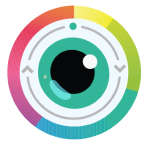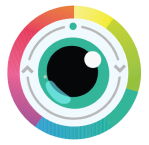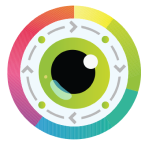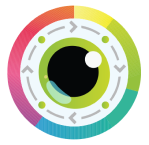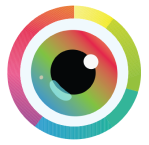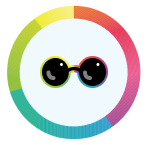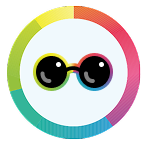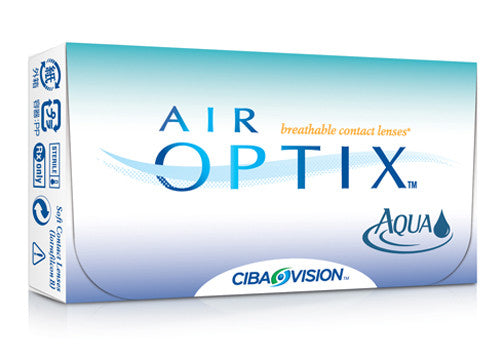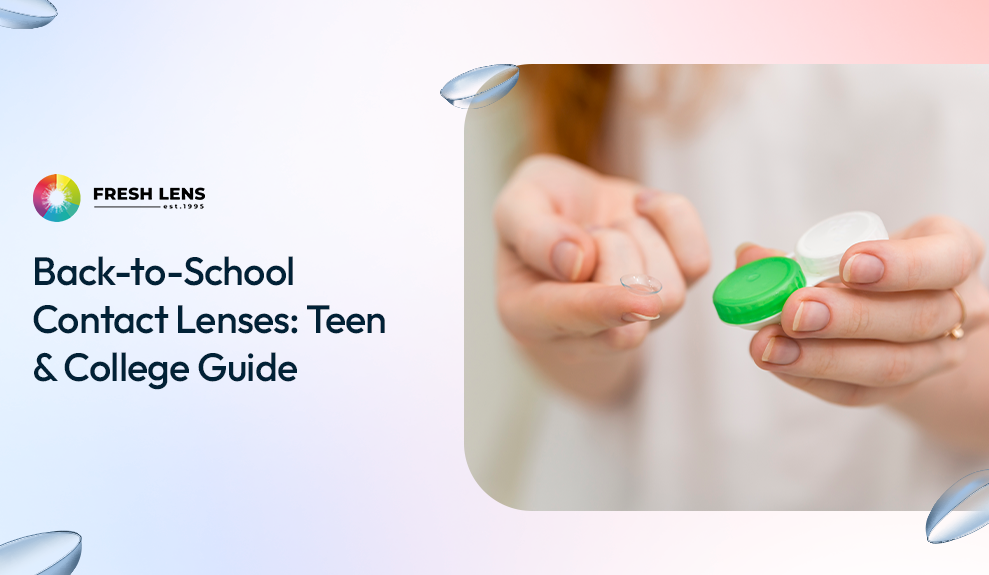
A new school year often means new routines, new clothes and sometimes new vision needs. For many students, this is the perfect time to consider switching from glasses to contact lenses. Whether you have a young teen entering high school or you’re a college student yourself, contact lenses can offer greater convenience and confidence in daily school life. However, you might be wondering: Is it the right time for contacts? Are they safe for my child? What about hygiene?
This comprehensive guide will walk you through everything teens, young adults, and parents should know about back-to-school contact lenses. We’ll discuss how to determine if a teen is ready, choosing the right type of lenses, common myths and facts, essential care tips, and the benefits of contacts in academic and social settings. Plus, we’ll consider when sticking with glasses (or using both glasses and contacts) might be the better choice.

When Is a Teen Ready for Contact Lenses?
There isn’t a strict age cutoff , the key factor is maturity and responsibility. Look for:
- Good personal hygiene habits
- Responsibility in daily routines
- Motivation and interest
- Issues with glasses (sports, fogging, etc.)
- Ability to follow instructions
Generally, middle school age (12-13) is when many eye doctors start recommending them. If unsure, consult your eye care provider and consider an in-office trial.
Choosing the Right Type of Contact Lens
Choosing the right type can make a big difference in comfort, convenience and overall success for students. Here are a few key considerations when picking contacts for teens or college students:
1. Lens Replacement Schedule – Daily vs. Monthly:
For busy students, daily disposable contacts are often a fantastic choice. With dailies, you wear a fresh new lens each day and throw it out before bed. There’s no cleaning or storing overnight, which simplifies the routine (and means one less thing to worry about with homework and extracurriculars). Daily lenses can also be healthier for teenage eyes since there’s less chance for deposit buildup or contamination. On the other hand, monthly or bi-weekly lenses need to be cleaned and stored each night, but they can be more cost-effective since one pair lasts longer. If your teen is diligent and on a budget, monthly lenses could work, just ensure they commit to the cleaning schedule.
2. Material – Go for Breathability:
Comfort is critical, and that largely comes down to lens material. Most modern soft contacts are made of hydrogel or silicone hydrogel materials. Silicone hydrogel lenses in particular are highly recommended because they allow much more oxygen to reach the cornea of the eye, keeping eyes healthier and less red, even with all-day wear. For long school days (and maybe after-school sports or study sessions), using a high-oxygen lens is a great idea. Many popular brands for teens are silicone hydrogel lenses due to their superb comfort.
Check out our range of Silicone Hydrogel Contact Lenses, designed to keep your eyes healthy and hydrated all day.
3. Vision Needs | Spherical, Toric, or Multifocal:
Does your teen have astigmatism or need special vision correction? Toric lenses are designed for astigmatism and will likely be prescribed if needed (these might be a tad trickier to insert at first because they’re made to sit a certain way on the eye).
If your student only needs simple near- or far-sighted correction, standard spherical lenses are fine. But what about reading glasses or bifocals? While uncommon for teens, some college-age or older students might have conditions requiring help with near focus (usually this is a concern after age 40, but perhaps a non-traditional older college student or someone with specific issues could need it). In such cases, there are Multifocal Contact Lenses available, these lenses have zones for distance and near vision, similar to bifocals, so one can see the board and read textbooks with the same lens. In fact, specialized contact lenses for reading and presbyopia exist for older adults or anyone who struggles with close-up focus.
4. Colored or Cosmetic Lenses – Fun but Use Wisely:
Some teens express interest in colored contacts, either to change eye color daily or for special occasions (like theatrical performances or Halloween). Prescription color contacts are available, and they can be a fun way for teens to experiment with their look. If your teen wants to try color lenses, ensure you get them through your eye care provider or a reputable source with a prescription. Never use costume lenses from unverified vendors as they can be unsafe.
Colored contacts require the same care and responsibility as regular ones. It might be best to start your teen on regular clear lenses to get used to contact wear, and later on they can try colored versions of the same brand (many major brands offer a color variant). Always prioritize fit and quality; the eye’s health comes first, fashion second.
Want to switch up your look while keeping your vision crystal clear? Browse our safe and stylish Colored Contact Lenses, available in prescription options too
5. UV-Blocking Lenses – Extra Protection:
Some contact lenses come with a UV-blocking feature. While contacts do not replace sunglasses (since they only cover part of your eye), UV protection in the lens can give an extra layer of defense against harmful rays during outdoor gym classes or campus activities. For example, many UV Contact Lenses in our catalog are designed to help shield eyes from UV light. It’s a nice bonus for students who spend a lot of time outside. Just remember, they should still wear quality UV-blocking sunglasses for full protection, especially in strong sun.
Myths vs. Facts: What Teens & Parents Need to Know
Debunking common concerns:
-
Myth: Too young for contacts.
- Fact: With guidance, responsible kids as young as 8-10 can wear them.
-
Myth: Contacts get lost behind the eye.
- Fact: Physically impossible due to a membrane behind the eyelid.
-
Myth: They worsen vision.
- Fact: They do not worsen prescriptions; vision changes are natural.
-
Myth: Too expensive.
- Fact: Costs vary and are often comparable to glasses.
-
Myth: Teens won’t clean them.
- Fact: Daily disposables solve that; cleaning routines are simple.
Tips for Proper Care, Wear & Hygiene
Wash hands before handling lenses
- Follow replacement schedule exactly
- Use proper contact solution only
- Clean and replace lens case regularly
- Remove lenses before sleep unless prescribed otherwise
- Avoid water contact with lenses
- Never share lenses
- Pay attention to eye discomfort or redness
- Alternate with glasses when needed
- Attend regular eye exams
By instilling these good habits from the start, you set your teen up for a lifetime of safe contact lens wear. The first few weeks are crucial for locking in the routine; maybe create a simple checklist for them to follow until it becomes second nature (e.g., “Wash hands , insert lenses , case cleaned and dry” in the morning, and reverse steps at night). After a short while, these precautions will just be a normal part of their day, like brushing teeth.
The benefit? Healthy, comfortable eyes and clear vision. Your teen will quickly learn that taking two minutes for lens care is absolutely worth the freedom contacts give them at school and activities.
Benefits of Contact Lenses for School & Campus Life
- Wider peripheral vision
- No fogging or smudges
- Comfort without frames
- Better compatibility with sports and fashion
- Confidence boost for teens
- Convenient for busy schedules
- Improved classroom and sports performance

When to Stick With Glasses (Or Use Both)
Contact lenses are fantastic, but they’re not the perfect solution for everyone or every situation. There are times when it might be better to wear glasses, or to alternate between contacts and glasses.
Here are a few scenarios and tips on knowing when glasses are the way to go:
- Not Quite Ready: If your teen has tried contacts and found it too difficult or isn’t consistent with the care, it’s okay to wait. Some younger teens may need to mature a bit more before they can handle the responsibility of lenses. There’s no harm in sticking with stylish eyeglasses for another year and then revisiting contacts later on.
- Eye Irritations or Health Issues: Any time a student has an eye infection (like pink eye), significant redness, or irritation, they should immediately switch to glasses and leave the contacts out. Contacts should not be worn on unhealthy eyes,it could worsen the problem. Also, if your teen has severe seasonal allergies causing itchy eyes, they might prefer glasses during high-allergy times since itching and contacts don’t mix well. Glasses can act as a barrier against pollen too. In cases of dry eye syndrome or other eye conditions, some individuals may simply find glasses more comfortable. Always prioritize eye health and comfort, even if that means pausing contact lens wear for a while.
- Long Hours or Demanding Days: If a student knows they have a marathon day (say, a science fair followed by sports practice and then a late study session), that might be a day to consider wearing glasses part-time. While many can wear contacts for the whole day, over 15-16 hours can be taxing on the eyes. Some college students, for instance, wear contacts all day but swap to glasses when back at the dorm at night to give their eyes a rest. Using both, contacts for daytime, glasses in the evening, is a common strategy that gives the benefits of contacts along with the relief of glasses when needed.
- Very Young Students or Specific Needs: Some younger children (below the typical age range) do wear contacts, often for medical reasons (like for certain eye conditions). But if there’s no pressing need, eye doctors and parents might opt to hold off on contacts until the child is older. Also, students with certain learning or developmental challenges might do better with glasses until they can manage contacts with less supervision. It’s important to tailor the vision correction method to what’s best for the individual child or teen.
Remember: Glasses and contacts are tools to help your vision; one is not inherently “better” than the other overall, it’s about what’s better for you at a given time. Encourage an attitude that both are normal and useful. That way, if a situation demands one over the other, your student will adapt easily without feeling inconvenienced.
Wrapping Up:
Back-to-school season is an excellent time to re-evaluate vision needs. Clear vision contributes to academic success, confidence, and safety. Whether your teen opts for the convenience of contact lenses or the reliability of glasses, or a mix of both, knowing the facts helps you make the best choice. If you decide to try contact lenses for your child, approach it with patience. Take advantage of your eye care provider’s expertise for training and advice. With proper care, contacts can be a game-changer for a young person’s school experience, offering them visual freedom and a self-esteem boost as they tackle new challenges. And if you stick with glasses, that’s perfectly okay too, there are plenty of stylish, lightweight frames that kids and teens love, and vision remains crystal clear.
At FreshLens, we’re here to support all your vision care needs, from Multifocal Contacts and Contact Lenses For Reading (for the older folks in your family) to fun color lenses and classic eyewear.
